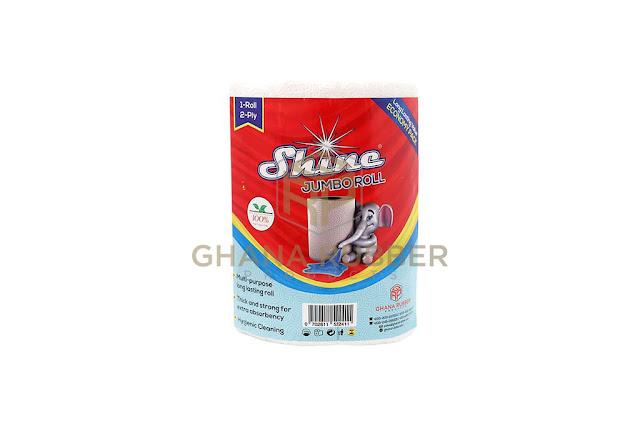Unraveling the Multifaceted Merits of Cling Films: An In-Depth Exploration
Within the domain of culinary preservation, cling films emerge as silent innovators, subtly transforming our approach to safeguarding and maintaining the freshness of our food. These transparent, extensible wraps offer an array of advantages that transcend mere convenience. In this exhaustive guide, we shall delve into the merits of cling films, scrutinizing their distinctive features and illuminating how they outperform traditional plastic receptacles and aluminum foils.
Deciphering the Essence of Cling Films
Cling films, also recognized as plastic wraps, represent thin, translucent sheets derived from polyethylene. Their fundamental purpose is to envelop and shield food items, constructing a barricade that thwarts spoilage, contamination, and desiccation. Let us unravel the myriad advantages they bring to the culinary stage.
1. Versatility in Application
Cling films boast unparalleled versatility within the culinary arena. Whether employed in enclosing sandwiches for a picnic, enveloping leftovers for storage, or preserving the crispness of fruits and vegetables, these films adeptly conform to diverse shapes and sizes. Their pliability renders them an indispensable implement for any culinary connoisseur.
2. Augmented Freshness and Prolonged Shelf Life
A standout attribute of cling films lies in their proficiency to encapsulate freshness. By adhering tightly to the contours of food items, they forge an hermetic seal that minimizes exposure to oxygen. This not only sustains the integrity of flavors but also elongates the shelf life of perishable items, consequently curbing food wastage.
3. Transparency for Effortless Identification
In stark contrast to opaque containers, cling films offer the boon of transparency. This facilitates the seamless identification of contents without necessitating unwrapping, expediting decision-making in the culinary realm. The see-through quality proves particularly advantageous when contending with a diverse array of stored items.
4. Space-Efficient Storage
Cling films occupy minimal space, rendering them an ideal choice for kitchens grappling with storage constraints. Their adeptness at conforming to the shape of food items allows for efficient stacking within refrigerators or pantries, optimizing the available space.
5. Economical Solution
In comparison to alternative food storage mediums, cling films present a financially judicious solution. Their affordability, coupled with the precision in utilizing requisite amounts, equates to economical food preservation – a crucial consideration for budget-conscious households.
Advantages Over Plastic Containers
1. Flexible Conformity
Plastic containers, though robust, often manifest in predetermined shapes and sizes. In stark contrast, cling films offer adaptive conformity, ensuring a snug embrace regardless of the contours of the food item, thereby optimizing preservation efficacy.
2. Mitigation of Bulk
Plastic containers have the propensity to consume substantial space, particularly when accommodating multiple items. Cling films, endowed with thin and pliable characteristics, facilitate a reduction in bulk, thereby enabling judicious utilization of storage space.
3. Amplified Freshness
Cling films excel in crafting a hermetic seal, a feat that plastic containers may struggle to replicate. This heightened sealing proficiency contributes to prolonged freshness, preserving the innate moisture of the food.
4. Simplicity of Employment
The simplicity and ease associated with employing cling films render them the preferred choice. Unfurling the desired length and enshrouding the food item demands minimal effort, rendering the entire process more convenient than contending with containers and lids.
Advantages Over Aluminum Foils
1. Optical Clarity
Diverging from aluminum foils, cling films offer optical clarity. This not only facilitates the uncomplicated identification of contents but also eliminates the necessity to unwrap the foil for a cursory glance, thereby mitigating unnecessary exposure to air.
2. Malleability
Cling films exhibit superior malleability and adaptability in comparison to aluminum foils. Their capacity to conform to the distinct contours of food items ensures a snug fit, minimizing the likelihood of air pockets and perpetuating optimal freshness.
3. Weight and Bulk Considerations
Aluminum foils have the proclivity to impart considerable weight and bulk to stored items. Cling films, owing to their lightweight and slender composition, proffer a streamlined and space-efficient alternative for food storage.
4. Enhanced Sealing Efficiency
Cling films distinguish themselves in crafting airtight seals by virtue of their inherently clingy nature. This proficiency transcends the sealing capabilities inherent in aluminum foils, thereby contributing to elevated food preservation standards.
In Conclusion: Embracing the Meritorious Edge of Cling Films
In the expansive narrative of culinary preservation, cling films unfurl a saga marked by adaptability, efficiency, and fiscal prudence. Their distinctive merits transcend the immediate task of encasement and sealing; they contribute to a sustainable and economically viable methodology for preserving our gastronomic delights. As we bid adieu to the constraints of conventional plastic containers and aluminum foils, let us warmly welcome the era of cling films – a versatile and transparent confederate in our culinary odyssey.
Intrigued by the manifold advantages of cling films? Embark on a journey to discover the transformative prowess of this culinary essential today!
.jpg)



Comments
Post a Comment